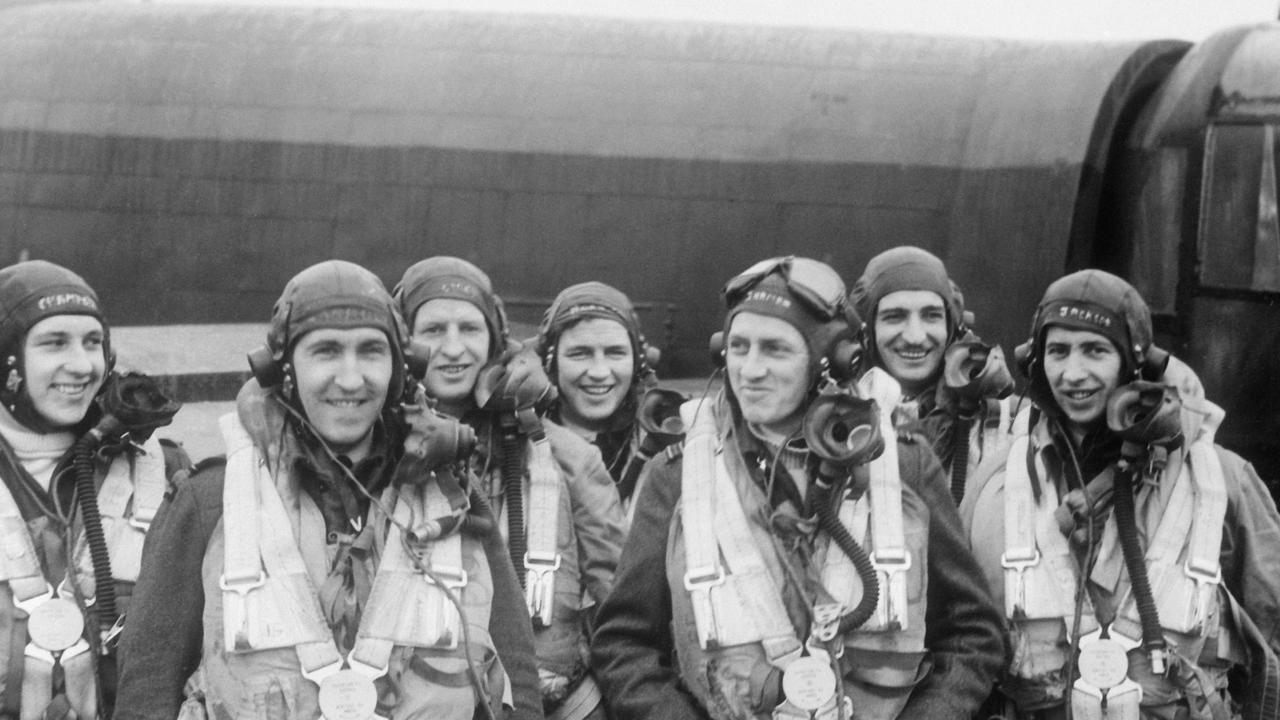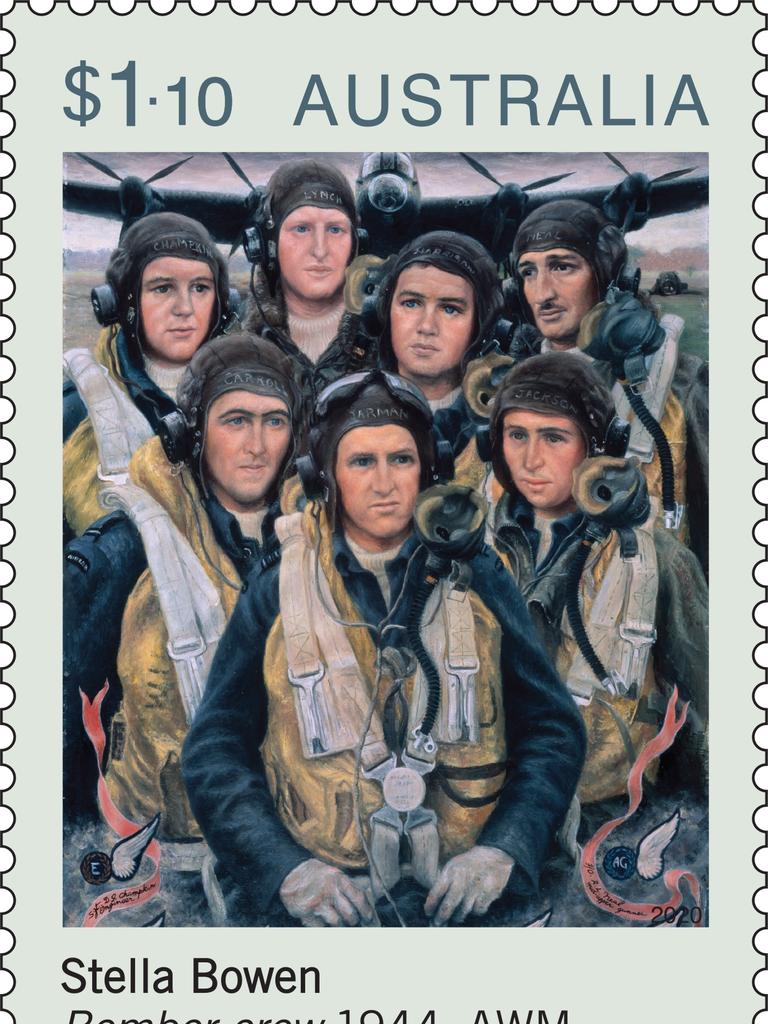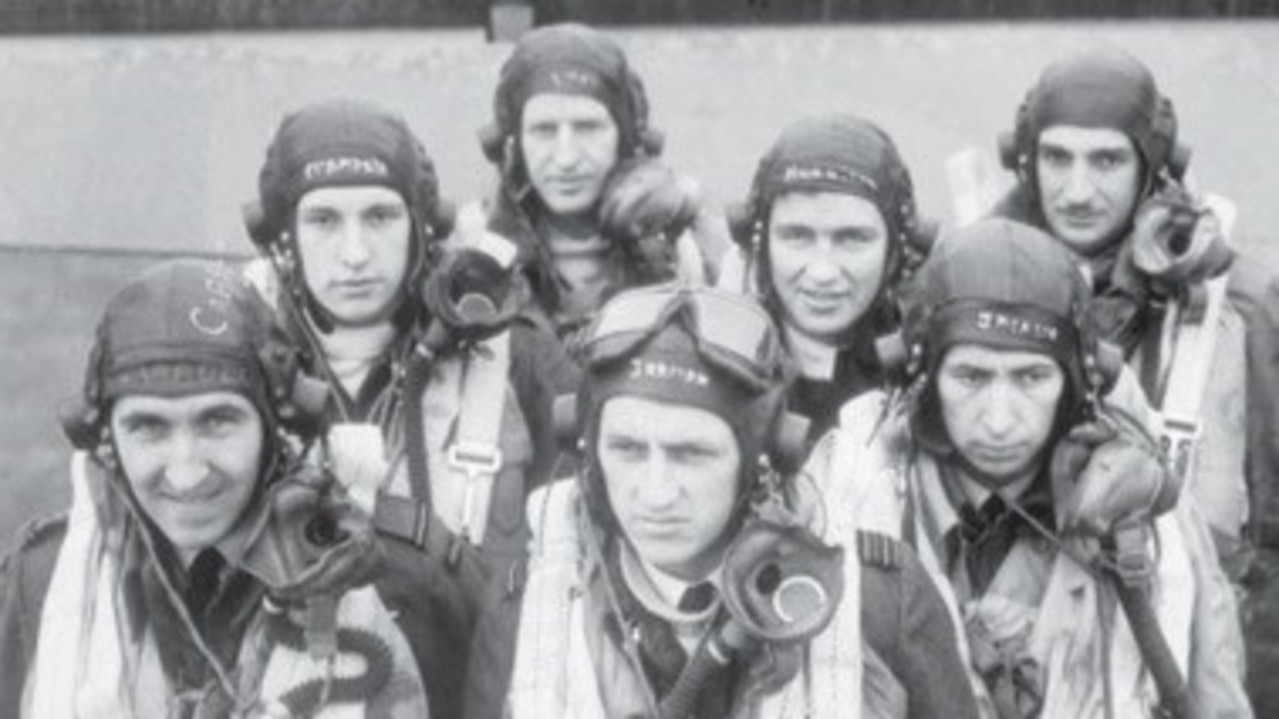Two Lismore men featured in commemorative Anzac Day Stamp
ON AN icy cold day in April 1944, more than 16,000km from home, two airmen from Lismore posed for a painting beside their Lancaster bomber.

Lismore
Don't miss out on the headlines from Lismore. Followed categories will be added to My News.
ON AN icy cold day in April 1944, more than 16,000km from home, two airmen from Lismore posed for a painting beside their Lancaster bomber.
>>> BREAKING NEWS: Three people arrested over gunpoint robbery
Within hours, the airmen, Flying Officer Francis Gordon Jackson and Flying Officer Hector Ronald Harrison, along with most of their crew, perished when the bomber was shot from the sky by a German night fighter.
TOP STORY: Police finalise investigation into fatal crash on Summerland Way
Now, 76 years later, the oil on canvas rendition of the No. 460 Squadron, RAAF by artist Stella Bowen has been chosen as the artwork for one of four commemorative issue stamps released by Australia Post for Anzac Day.

Robert Trevan, who is from Lismore and has been researching the event for a book, said Bowen attended open fields of the Binbrook aerodrome in Lincolnshire to make sketches of the crew before they went on a mission.
Mr Trevan said at approximately 1.40am on April 27, 1944, while 20 minutes out from the target LM 523, their Lancaster was intercepted by a German ME 110 night fighter.
He said Heinz Martin Hadeball had flown under the Lancaster to avoid being seen. The German's modified night fighter had been equipped with radar and 'Shrage Musik' - the German nickname for upward firing cannons. From this position, Hadeball fired exploding cannon shells into the Lancaster's wing between the engines.
The Lancaster did not have self-sealing fuel tanks, so the wings erupted into flame and soon became structurally unsound. This type of attack from enemy night fighters often made a fatal crash inevitable.
Mr Trevan added that the entire crew perished except the tail gunner Thomas Lynch. Captured and badly injured, German doctors placed Lynch in a coma for several days before amputating his right leg. He reportedly woke with no recollection of the events.
The crew had been selected especially for the portrait and upon learning of their fate, Stella Bowen wrote to her brother commenting that it was horrible having to finish such a picture.
"It felt like painting ghosts," she wrote.
In choosing this particular stamp, Dr Hilary Maddocks, philatelic researcher at Australia Post, said they set out to include works that were representative of both world wars and the experiences of both men and women.
"Bomber Crew is Stella Bowen's best known work and she was only the second woman to be appointed as an official war artist," Dr Maddocks said.
Related Stories
• REVEALED: Names of 68 local soldiers who died at Gallipoli
• Does this town hold the clue to surviving a pandemic?



